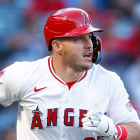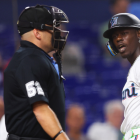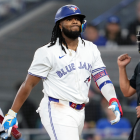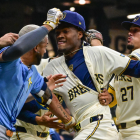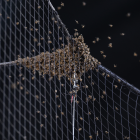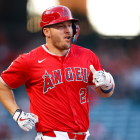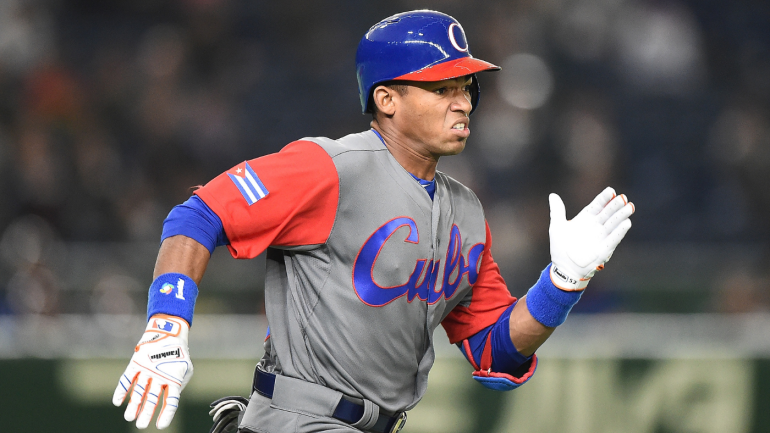
Friday, Jan. 15, is an important date on MLB's offseason calendar. It is the open of the 2021 international signing period, one of two ways MLB teams can acquire amateur talent each year. The draft covers players born in the United States, Canada, and Puerto Rico. All others fall into international free agency.
Roughly 30 percent of MLB players were originally signed as international free agents the last few years, including superstars like Ronald Acuna Jr., Juan Soto, and Fernando Tatis Jr. Perennial contenders like the Dodgers and Yankees, teams that usually pick late in the draft, use international free agency to add elite prospects to their farm system.
All-Stars will be signed when the signing period opens Friday. Maybe even a Cy Young winner or an MVP. Possibly even a Hall of Famer. Here's everything you need to know going into the open of the 2021 international signing period.
Rule changes for 2021
The international signing period typically runs from July 2 to June 15, but it will instead run from Jan. 15 to Dec. 15 this year because of the COVID-19 pandemic. The players that sign Friday are the players who would have signed last July 2 in a normal year. The signing period will run Jan. 15 to Dec. 15 next year as well. This is a two-year rule change.
"The coronavirus pandemic has affected all levels of baseball around the world," MLB executive vice president Morgan Sword said in a statement in June. "... As a result, we will begin the next signing period in January, rather than on the traditional July 2 date. We have been hard at work with our clubs and partner trainers to prepare for the safe return of baseball to Latin America. We look forward to welcoming another class of tomorrow's superstars into our game in January."
MLB does nothing by accident, of course, and moving the international signing period into a single calendar year sets the league up for an international draft in the near future. MLB and the 30 owners have been pushing for an international draft for years now as a way to cut costs. This is a step in that direction. An international draft seems closer to a reality than ever right now.
The other significant international free agency rule chance put in place because of the pandemic is a ban on bonus pool trading. In the past, teams could acquire up to an additional 50 percent of their bonus pool space. That is not allowed this year. Your bonus pool is your bonus pool. No more, no less. The late start and set bonus pools are the two big changes this year.
Bonus pools
Bonus pools are set according to market size, with small-market teams getting the most and large-market teams getting the least. There are bonus pool penalties for signing a qualified free agent and teams that receive a competitive balance lottery draft pick (small-market teams) get a little bonus pool boost.
Here are the bonus pools for the 2021 international signing period:
- $6,431,000: Brewers, Marlins, Rays, Reds, Tigers, Twins
- $5,899,600: Cardinals, Indians, Diamondbacks, Orioles, Padres, Pirates, Rockies, Royals
- $5,348,100: Astros, Athletics, Blue Jays, Cubs, Dodgers, Giants, Mariners, Mets, Nationals, Rangers, Red Sox, White Sox
- $4,732,700: Angels, Phillies
- $4,232,700: Yankees
- $1,572,000: Braves
The Angels (Anthony Rendon), Phillies (Zack Wheeler), and Yankees (Gerrit Cole) all forfeited bonus pool space to sign a qualified free agent. The Braves forfeited pool space to sign Marcell Ozuna and were docked 50 percent of their original pool as part of the penalties stemming from their 2017 international free agency scandal. That's why their bonus pool is so small.
It's important to note the bonus pool is a hard cap. The draft bonus pools are a soft cap -- teams can exceed their draft pool and pay a penalty depending on the overage (a tax, forfeit future picks, etc.) -- but not the international free agency caps. They can not be exceeded. Those bonus pools above are set.
Top players
The most recognizable name -- if not the best player -- on the international market this year is Yoelkis Cespedes, Yoenis' younger brother. Yoelkis, 22, was declared a free agent last March and is a known quantity to scouts given his time playing in international tournaments, including the 2017 World Baseball Classic.
MLB.com notes Yoelkis has revamped his swing in recent years and "now looks almost exactly like his older brother in the batter's box," and that he's gained "more power and explosive bat speed" as he's matured physically. International players typically agree to deals months (even years in some cases) in advance, though it's unclear whether Cespedes has a contract already lined up.
Here are a few other notable players available in international free agency this year, with a quick scouting note from MLB.com:
- Venezuelan SS Carlos Colmenarez: "He exhibits good bat speed and the ability to drive the ball to all fields in games" and "has the makings of an above-average defender." The Rays are expected to sign him.
- Dominican SS Armando Cruz: "He's known as a plus defender with an extraordinary combination of footwork and hands" and "has shown good bat speed and a slight upstroke with his swing." Cruz is expected to sign with the Nationals.
- Venezuelan SS Wilman Diaz: "Diaz shows a plus hit tool with excellent bat speed and a knack for recognizing pitches" and "shows plus arm potential and plus actions at shortstop." He is expected to sign with the Dodgers.
- Cuban OF Pedro Leon: "Leon doesn't swing and miss much, and he shows power potential to all fields" and "he has all of the tools to stay in center field and displays a strong and accurate arm." The Astros are expected to sign him.
- Cuban RHP Norge Vera: "Evaluators believe Vera has a chance to be a starter at the top of the rotation" because his "slider, curveball and changeup are also projected to be workable pitches." Vera is expected to sign with the White Sox.
Accurate information on international players can be hard to find, and bonus size is generally a good proxy for prospect status. The larger the bonus, the more teams believe in the player. That said, bonuses of $10,000 or less do not count against the bonus pool, and inevitably some of those players become big leaguers. Framber Valdez originally signed for $10,000 in 2015, for example.














